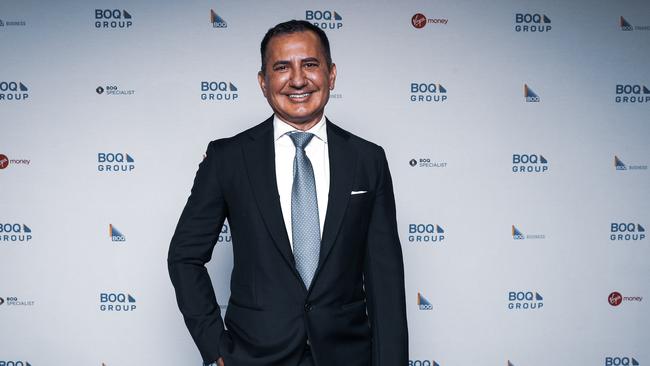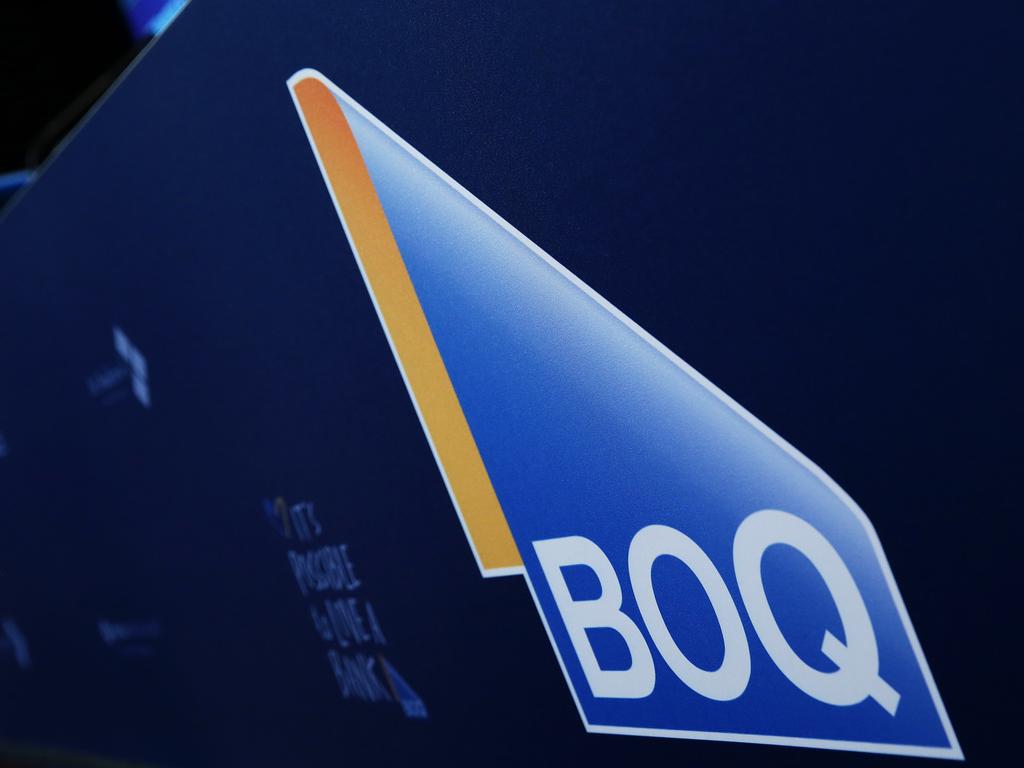Bank of Queensland braces for ‘years’ of property pain, flags $186m hit
Bank of Queensland is tipping house prices to plunge more than 20pc in its worst case scenario, and commercial to dive 30pc.

Bank of Queensland has warned of another year of property pain, with house prices tipped to plunge more than 20 per cent in its worst-case scenario and commercial property to dive 30 per cent by the end of 2021.
Even the regional lender’s base-case scenario is more pessimistic than its peers, with the bank tipping a 75 per cent chance house prices will tumble 11 per cent peak-to-trough, and commercial property will slump 15 per cent by the end of next year.
The warning, which forced the bank to top up its provisioning to protect against soured loans, comes as three of the major banks — ANZ, National Australia Bank and Westpac — prepare to rule off their full-year accounts on Wednesday.
BoQ’s customer base skews to Queensland, which has been crunched by the international tourism freeze. It also has a large portfolio of small to mid-sized business customers across the country with many hit by the COVID lockdowns in southern states.
BoQ’s downbeat outlook weighed on the banking sector on Tuesday, dragging the broader ASX down.
The regional lender led the declines with a 7.2 per cent plunge to $5.89, followed by Bendigo Bank’s 2.2 per cent drop to $6.20. The majors also ended Tuesday’s session in the red, with Westpac falling 1.3 per cent to $17.16, Commonwealth Bank losing 0.7 per cent to $65, ANZ dropping 0.7 per cent to $17.58, and NAB falling 0.8 per cent to $18.08.
BoQ’s view of the economic outlook is in contrast with other lenders, which have been revising their forecasts upwards in recent weeks.
The nation’s largest lender, CBA, earlier this month said it expected house prices to dip 6 per cent peak to trough, compared with its earlier forecast of a 10 per cent drop. Westpac, likewise, is expecting a total 5 per cent fall in house prices, up from its previous expectation of a 10 per cent drop, with lower rates tipped to cushion the decline.
The Reserve Bank is widely expected to slash rates in either October or November, with some leading economists tipping rates could go to as low as 0.1 per cent next week to help fire up a recession-plagued economy.
Others don’t see the central bank cutting on budget day and are instead calling a November cut.
“November is looking more likely given the backgrounding of journalists who say the RBA wants to see the contents of the October 6 budget, as well as not wanting to steal the limelight from the budget,” NAB said on Tuesday.
It follows Westpac chief economist Bill Evans making a similar call last week.
Under its base-case scenario for 2020, BoQ expects gross domestic product to shrink by 6 per cent and unemployment to hit 10 per cent. Its worst-case scenario, meanwhile, sees gross domestic product contract 9 per cent this year and unemployment jump 12 per cent.
The grim outlook comes as the bank flagged loan impairment expenses of $175m before tax for the 2020 year, based on its new modelling
The bulk of the bad debt provisions — $133m — related to COVID-19, the lender said. That figure is nearly double the $71m it was provisioning for just two months ago.
The $175m loan impairment equates to 37 basis points of gross loans for the 2020 financial year.
“The revised provision reflects the anticipated lifetime losses on the current portfolio relating to the impacts of COVID‐19,” said BoQ CEO George Frazis, a former top Westpac retail executive.
As at August 31, 12 per cent of the bank’s home loan borrowers and 16 per cent of its small and medium enterprise customers were on its relief package, with 25 per cent of those making full or partial repayments, BoQ said.
Analysts have warned commercial property is vulnerable, and the risk of rising unemployment, lower occupancy and higher incentive levels means that free cashflow could rapidly decline across commercial portfolios, even putting aside risks around COVID-19 rent relief.
Despite the rising number of souring loans, the lender gave investors a glimmer of hope on a dividend payout.
“We are very aware of the importance of dividends to our shareholders, including to our significant number of loyal retail shareholders.
“We have completed our scenario analysis in relation to dividends and have consulted with APRA in line with the guidance issued on 29 July 2020. The board will make a determination on dividends in relation to financial year 2020 at our full year results,” Mr Frazis said on Tuesday. BoQ ruled off its accounts on August 31.
APRA in July told banks to limit the proportion of profits paid out to shareholders to no more than 50 per cent.
Bell Potter banking analyst TS Lim expects the lender to announce both an interim and final dividend when it hands down its results next month.
Morningstar analyst Nathan Zaia is less hopeful, believing the interim dividend will be scrapped. But he expects investors to receive a final dividend.
“We think a final dividend is likely but that will be just 50 per cent of second-half earnings. We had (priced in) an 8c per share dividend but now that’ll come down to about a 6c per share payout,” Mr Zaia said.
BoQ’s latest COVID provisioning brought it into line with other lenders, Mr Lim noted.
“When you look at 37bps for the full year, and 62 for the half, it’s in the ballpark with all the other banks. And not to mention they have exposure in Victoria. So again, it comes as no surprise,” Mr Lim said.
The COVID hit would be offset somewhat by organic capital generation, Mr Lim added.




To join the conversation, please log in. Don't have an account? Register
Join the conversation, you are commenting as Logout